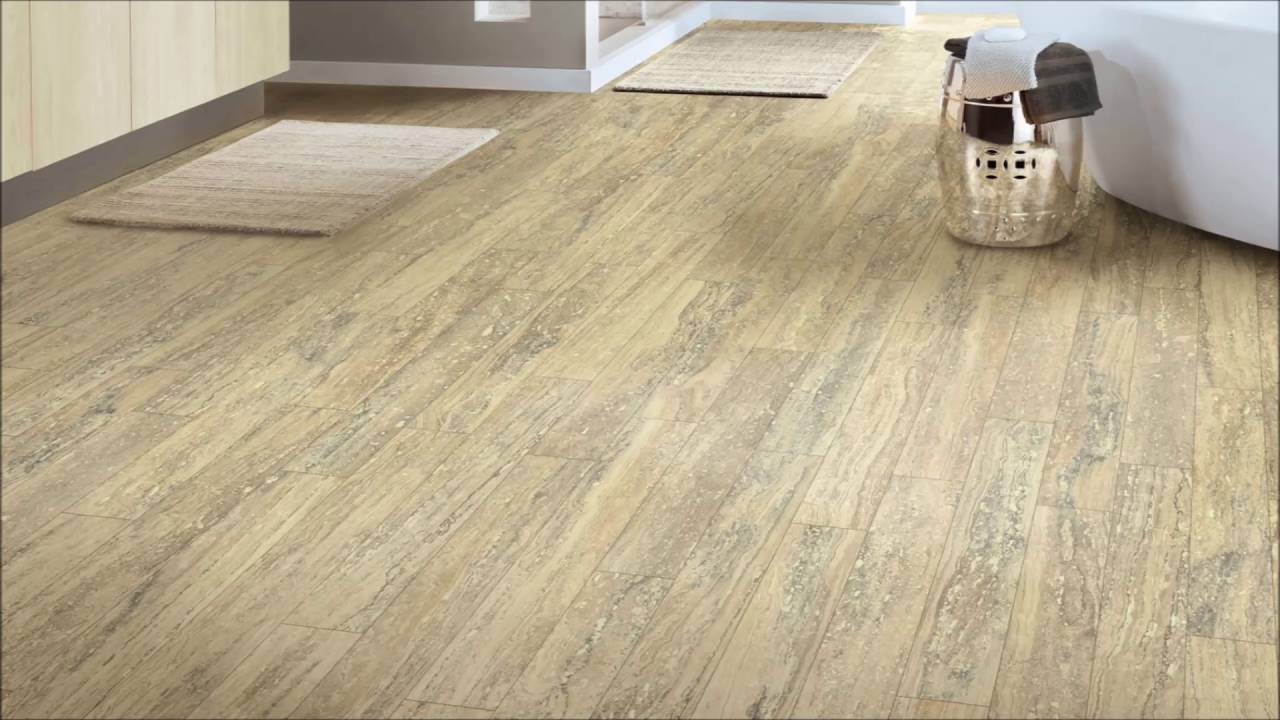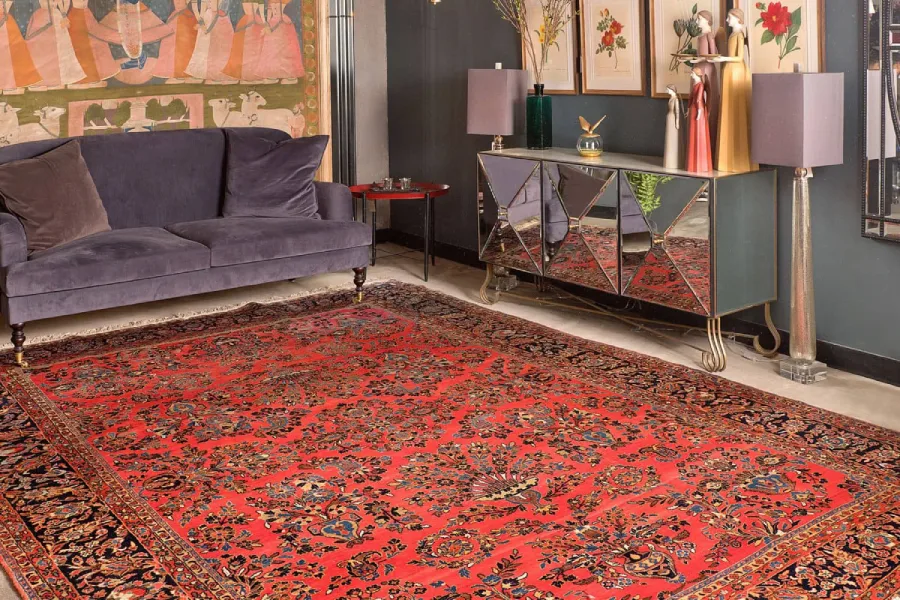PVC linoleum flooring is a versatile and practical choice for both residential and commercial spaces. With its combination of style, durability, and easy maintenance, PVC linoleum flooring has become increasingly popular in the flooring industry.
Best Services Provider For PVC Linoleum Flooring in Dubai & Abu Dhabi

What is PVC Linoleum?
PVC linoleum, also known as PVC linoleum flooring, is a flooring material made from synthetic materials, primarily polyvinyl chloride (PVC), with various additives. While it bears the name “linoleum,” it is not true linoleum. True linoleum, as we’ll discuss shortly, has a different composition.
At CarpetsStore.ae, we offer a wide range of PVC dubai linoleum flooring options to cater to diverse design preferences and requirements. In this article, we will explore the various aspects of PVC flooring, its advantages, installation process, care and maintenance, applications, and more.
PVC linoleum or Vinyl flooring, also known as luxury vinyl flooring, is a synthetic flooring material composed of multiple layers. It consists of a sturdy PVC core layer, a printed design layer, and a wear layer on top for protection. This layered construction gives PVC flooring like vinyl or linoleum and its exceptional durability and resilience.
This Type of flooring is primarily made of polyvinyl chloride (PVC) resins, which provide stability, strength, and moisture resistance. The printed design layer features high-definition images that mimic various natural materials like wood, stone, or tile. The wear layer, often made of urethane or aluminum oxide, safeguards the flooring against scratches, stains, and wear-and-tear.
Types of PVC Linoleum Flooring
There are several types of PVC flooring available, each designed to suit different applications and environments. Some common types include:
- Rigid Core Vinyl Flooring: This type of PVC flooring has a rigid core layer that offers excellent dimensional stability and can be installed directly over uneven subfloors.
2. Luxury Vinyl Planks (LVP): LVP is designed to resemble hardwood flooring, with planks that mimic the look and texture of natural wood.
3. Luxury Vinyl Tiles (LVT): LVT features tile-shaped pieces that imitate the appearance of various stone or ceramic tile options.
4. WPC Vinyl Flooring: WPC (Wood Plastic Composite) vinyl flooring combines the durability of PVC with a rigid core made of a mix of wood and plastic.
Design Options and Aesthetics
One of the key advantages of linoleum flooring is its wide range of design options. Manufacturers use advanced printing techniques to create realistic visuals that closely resemble natural materials. Whether you prefer the warmth of hardwood, the elegance of marble, or the rustic charm of stone, you can find best PVC linoleum flooring that suits your desired aesthetic. Additionally, various sizes, plank or tile formats, and surface textures are available to further enhance the authenticity and appeal of the flooring.

Advantages of PVC Linoleum and Vinyl Flooring
Durability and Longevity
This type of flooring is highly durable and built to withstand heavy foot traffic, making it suitable for both residential and commercial spaces. The wear layer provides excellent resistance against scratches, scuffs, and stains, ensuring the flooring retains its pristine appearance for years to come. Additionally, PVC flooring is resilient and can handle the impact of everyday activities, making it an ideal choice for busy households and commercial settings.
Moisture and Water Resistance
One of the significant advantages of linoleum flooring is its resistance to moisture and water damage. The PVC core layer acts as a barrier, preventing water from seeping into the flooring. This makes PVC flooring an excellent choice for areas prone to moisture, such as bathrooms, kitchens, and basements. Its resistance to water damage also makes it easier to clean and maintain, as spills and stains can be easily wiped away without causing long-term damage.
Easy Maintenance and Cleaning
Linoleum flooring is known for its low-maintenance characteristics. Regular sweeping or vacuuming, coupled with occasional damp mopping, is usually sufficient to keep the flooring clean and free from dust and debris. Unlike natural materials such as wood or stone. Linoleum PVC flooring does not require sealing or polishing. Additionally, its protective wear layer makes it resistant to stains, allowing for easy cleanup of spills and messes.
Eco-Friendly Choice
Linoleum PVC flooring offers an eco-friendly alternative to traditional flooring materials. The production of PVC flooring consumes fewer natural resources compared to materials like hardwood or stone. Furthermore, linoleum flooring is recyclable and can be repurposed or used to create new flooring products, reducing environmental impact. When selecting Types of flooring, it is essential to choose products that meet recognized environmental standards, such as those certified for low VOC emissions and sustainable manufacturing practices.
Affordability and Cost-Effectiveness
PVC flooring provides an affordable and cost-effective flooring solution without compromising on quality and aesthetics. Compared to natural materials like hardwood or stone, PVC flooring types offers a more budget-friendly option that can replicate the look and feel of these materials. Furthermore, its durability and low maintenance requirements contribute to long-term cost savings, as Linoleum PVC flooring rarely requires replacement or extensive repairs.
Main Advantage Points About PVC Linoleum and Vinyl Flooring
| Advantage | PVC Linoleum Flooring | Vinyl Flooring |
|---|---|---|
| Durability | Resilient and long-lasting, can withstand heavy foot traffic | Highly durable, resistant to wear, stains, and scratches |
| Variety of Designs | Limited color and pattern options, natural and organic look | Wide array of designs, including wood and stone motifs |
| Water Resistance | Moderately resistant; needs proper sealing and maintenance | Excellent water resistance, ideal for wet areas like bathrooms |
| Maintenance | Requires regular sealing and waxing for optimal performance | Low-maintenance, easy to clean with routine sweeping and mopping |
| Eco-friendliness | Contains natural materials, relatively eco-friendly | Contains PVC, less environmentally friendly |
| Comfort | Softer and warmer underfoot, provides insulation | Generally harder and cooler, may need rugs for comfort |
| Installation Options | Typically glued down, fewer installation methods | Versatile installation options including peel-and-stick, click-lock, and glue-down |
| Cost | Often more expensive upfront due to natural materials | Generally more budget-friendly |
| Lifespan | Typically has a shorter lifespan compared to vinyl | Longer lifespan, often lasting 10-20 years or more |
| Health Considerations | May emit initial VOCs, so look for low-VOC options | Some vinyl products may also emit VOCs, choose low-VOC options if concerned |
Is Linoleum Made of PVC?
No, traditional linoleum is not made of PVC. Linoleum is crafted from natural ingredients such as linseed oil, cork powder, wood flour, and natural pigments. It is renowned for its eco-friendliness and unique composition. On the other hand, PVC linoleum is a synthetic alternative that mimics the appearance of linoleum but is primarily composed of PVC, making it different in terms of material.
Is PVC Good for Flooring?
PVC is a common material used in flooring, and its suitability depends on your specific needs. PVC flooring is known for its durability, water resistance, and ease of maintenance. It’s a cost-effective choice and offers a wide range of styles and colors. However, it’s essential to consider the potential environmental impact of PVC and look for low-VOC (volatile organic compounds) options if you’re concerned about indoor air quality.
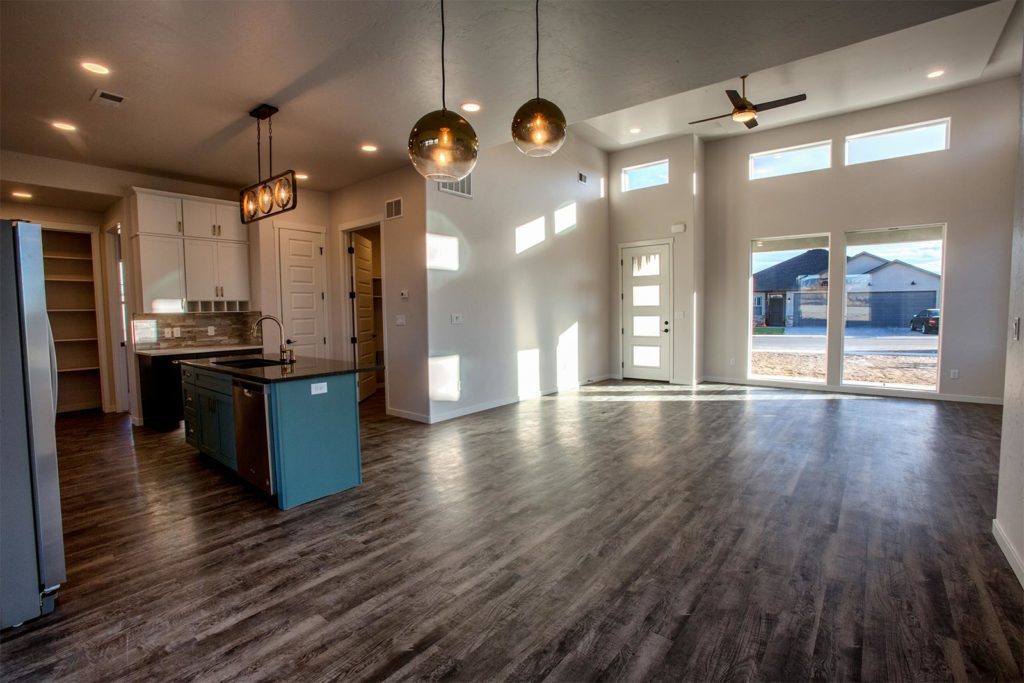
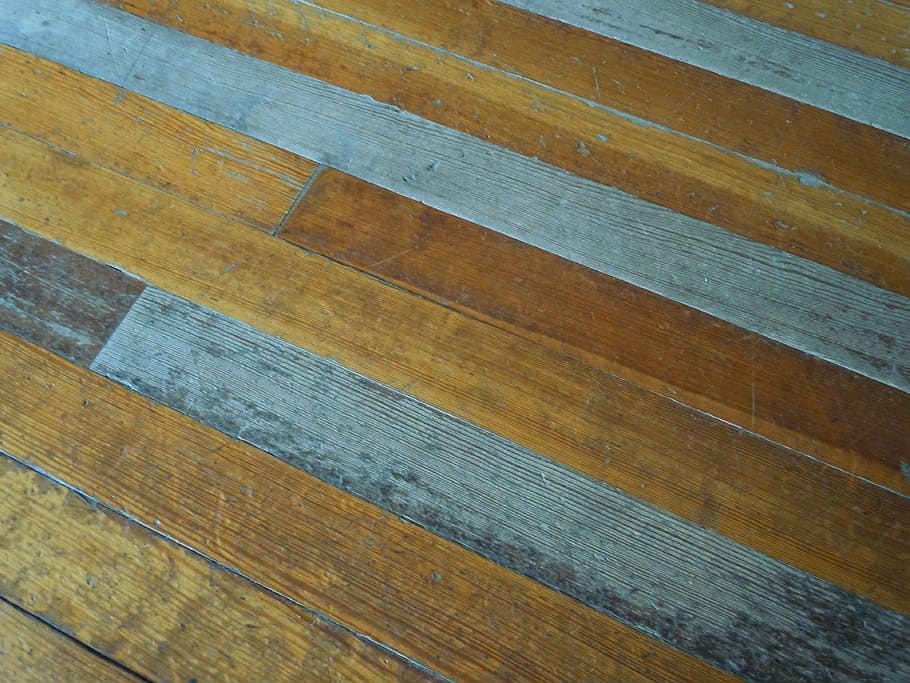
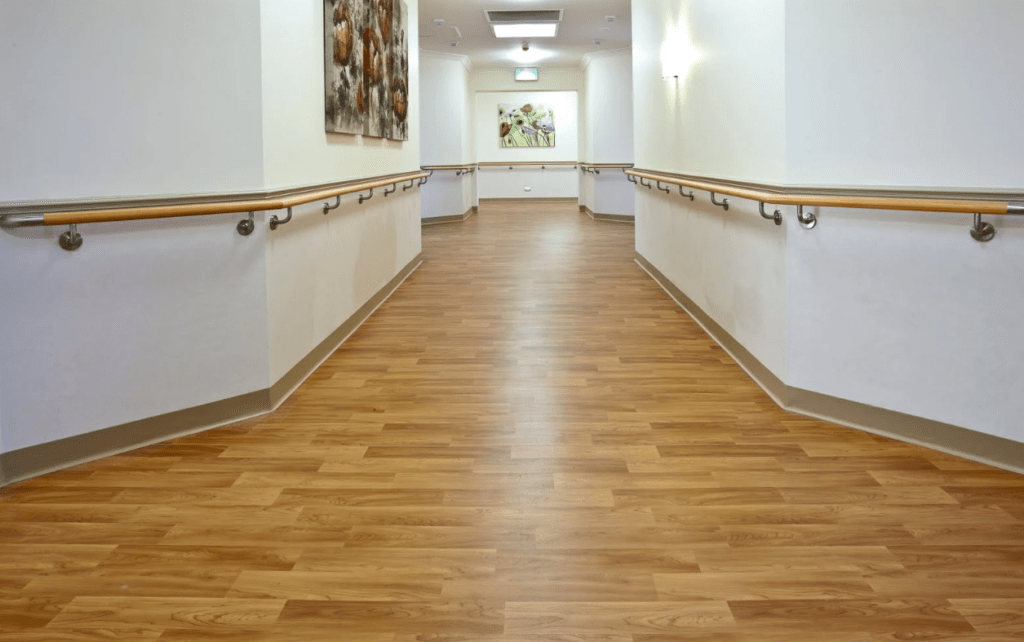
Difference Between PVC Linoleum and Vinyl Flooring
| Aspect | PVC Linoleum | Vinyl Flooring |
|---|---|---|
| Composition | Made from natural materials like linseed oil, cork powder, and wood flour, with a PVC backing layer | Made from synthetic materials like PVC (polyvinyl chloride) with various additives |
| Environmental Impact | More environmentally friendly due to the use of natural materials | Generally less eco-friendly due to the use of synthetic PVC |
| Appearance | Natural and organic look, available in a limited range of colors and patterns | Wide variety of colors, patterns, and styles, including realistic wood and stone designs |
| Durability | Durable, but may require regular maintenance like sealing and waxing | Highly durable and low-maintenance, resistant to stains, scratches, and moisture |
| Installation | Typically glued down to the subfloor | Can be installed as a peel-and-stick, click-lock, or glue-down product, offering more installation options |
| Comfort | Softer and warmer underfoot | Generally harder and cooler to the touch |
| Cost | Usually more expensive upfront | Typically more budget-friendly |
| Water Resistance | Susceptible to water damage if not properly sealed | Resistant to moisture, making it suitable for wet areas like bathrooms and kitchens |
| Maintenance | Requires periodic maintenance and sealing | Easy to clean and maintain with regular sweeping and mopping |
| Lifespan | Generally has a shorter lifespan compared to vinyl flooring | Longer lifespan, often lasting 10-20 years or more |
| Health Considerations | May emit VOCs (volatile organic compounds) initially | Some vinyl products may also emit VOCs, so check for low-VOC options if concerned about indoor air quality |
Installation and Care of PVC Linoleum Flooring
Installation Process
Installing linoleum PVC flooring requires careful preparation and attention to detail. It is recommended to hire professional installers who are experienced in working with this type of flooring. The installation process typically involves the following steps:

Subfloor Preparation: The subfloor needs to be clean, dry, level, and free from any imperfections. The installers will assess the condition of the subfloor and make any necessary repairs or adjustments.
Acclimation: This type of flooring should be acclimated to the room’s temperature and humidity conditions before installation. This helps minimize expansion or contraction after installation.
Underlayment Installation: Depending on the specific type of PVC flooring, an underlayment or padding layer may be recommended to provide additional cushioning, noise reduction, or insulation.
Flooring Installation: The PVC linoleum flooring is carefully laid down, ensuring proper alignment, adhesive application (if required), and secure fitting. The installers will ensure that each plank or tile is correctly positioned, creating a visually appealing and structurally sound floor.
Finishing Touches: Baseboards or molding are installed to provide a clean and polished appearance, covering any gaps or expansion spaces around the edges of the flooring.
Preparation and Subfloor Requirements
To ensure a successful installation, it is essential to prepare the subfloor properly. The subfloor should be clean, level, and free from any moisture or structural issues. Subfloor requirements may vary depending on the specific type of PVC flooring and the manufacturer’s guidelines. Installers will assess the condition of the subfloor and make any necessary repairs or adjustments to ensure a smooth and stable surface for installation.
Maintenance Tips and Cleaning Methods
Proper maintenance and regular cleaning are essential for keeping linoleum flooring in optimal condition. Here are some maintenance tips and cleaning methods:
Sweep or Vacuum Regularly: Regular sweeping or vacuuming removes loose dirt and debris, preventing them from scratching or dulling the surface of the flooring.
Damp Mop as Needed: Occasional damp mopping with a mild, pH-neutral cleaner is recommended to remove stubborn dirt or stains. Avoid using excessive water, as it can seep into the seams or edges of the flooring and cause damage.
Promptly Clean Spills: Wipe up spills or liquids immediately to prevent staining or potential damage to the flooring. Use a damp cloth or mop to remove any residue, followed by drying the area thoroughly.
Avoid Harsh Chemicals or Abrasive Cleaners: Harsh chemicals, abrasive cleaners, or wax-based products can damage the protective wear layer and diminish the flooring’s appearance. Stick to mild, non-abrasive cleaners specifically formulated for use on flooring.
Use Furniture Pads and Mats: Place furniture pads or mats under heavy furniture or appliances to prevent indentation or scratching of the flooring.
Avoid Excessive Heat or Sunlight Exposure: Protect linoleumPVC flooring from direct sunlight or extreme heat sources, as prolonged exposure can cause fading or discoloration. Use window treatments or protective coatings to minimize UV rays’ impact.
Preventing Damage and Extending Lifespan
Taking preventive measures can help extend the lifespan of PVC flooring and minimize the risk of damage. Here are some steps you can take:
Use Entrance Mats: Place entrance mats or rugs at the entrances to trap dirt, sand, or debris from being tracked onto the flooring. This helps prevent scratches or abrasions.
Avoid High Heels or Sharp Objects: High heels, spiked shoes, or sharp objects can dent or scratch the surface of the flooring. Encourage removing shoes or using protective pads to prevent damage.
Trim Pet’s Nails: Keep your pet’s nails trimmed to prevent scratching or gouging the flooring.
Use Protective Pads or Furniture Glides: Attach protective pads or furniture glides to the bottom of furniture legs or appliances to avoid scratches or indentations.
Clean Spills Immediately: Promptly clean up any spills or liquids to prevent staining or seepage into the seams or edges of the flooring.
Applications and Versatility of PVC Flooring
Residential Applications
PVC flooring is an excellent choice for various residential applications. Its durability, ease of maintenance, and wide range of design options make it suitable for:
Living Areas: PVC flooring adds warmth and comfort to living rooms, family rooms, and bedrooms, while providing a durable surface that can withstand everyday activities.
Kitchens: The moisture-resistant properties of flooring PVC linoleum make it an ideal choice for kitchens, where spills and splashes are common. Its ease of cleaning and stain resistance make it practical for this high-traffic area.
Bathrooms: Flooring PVC linoleum offers a waterproof flooring solution for bathrooms, providing a stylish and practical alternative to traditional materials like ceramic tiles.
Basements: Basements often have moisture concerns, and flooring PVC linoleum resistance to water damage makes it a suitable choice for transforming basements into usable living spaces.
Children’s Rooms: PVC linoleum flooring is an excellent option for children’s rooms due to its durability, easy maintenance, and ability to withstand the rigors of active play.
Commercial and Office Spaces
PVC flooring is widely used in commercial and office spaces due to its versatility and durability. It offers several benefits for these environments:
Retail Stores: PVC linoleum flooring can withstand high foot traffic and provides an attractive backdrop for retail spaces, showcasing products effectively while maintaining a clean and inviting appearance.
Offices and Workspaces: PVC linoleum flooring contributes to a professional and functional work environment, offering comfort underfoot and durability to handle office furniture and equipment.
Hospitality Industry: Hotels, restaurants, and resorts can benefit from flooring PVC linoleum ability to replicate the look of natural materials while providing enhanced durability and ease of maintenance.
Educational Institutions: PVC linoleum flooring is a practical choice for schools, colleges, and universities, withstanding heavy foot traffic and daily wear while offering design flexibility for different educational areas.
Healthcare Facilities: The moisture-resistant and hygienic properties of linoleum flooring make it suitable for hospitals, clinics, and other healthcare facilities, where cleanliness and infection control are crucial.
Hospitality and Retail Settings
PVC flooring is a popular choice for hospitality and retail settings, where aesthetics and durability are essential. Its design options, ease of maintenance, and durability make it suitable for various applications:
Hotels and Resorts: Linoleum flooring PVC can create a warm and welcoming ambiance in hotel lobbies, corridors, guest rooms, and other public spaces while withstanding heavy foot traffic.
Restaurants and Cafes: Linoleum flooring PVC offers the look of natural materials like hardwood or stone, creating a stylish and inviting atmosphere for dining areas, bars, or cafes.
Shopping Malls: Linoleum flooring PVC is an ideal choice for shopping mall flooring, providing an attractive and durable surface that can withstand the high volume of shoppers and heavy foot traffic.

FAQ
What is Linoleum Flooring Made Of?
Linoleum flooring is crafted from natural ingredients, including linseed oil, cork powder, wood flour, and natural pigments. This composition gives it a unique, organic appearance and makes it an environmentally friendly choice for flooring.
Which is Better: Vinyl Flooring or Linoleum?
The choice between vinyl flooring and linoleum depends on your priorities. Vinyl flooring is known for its durability, low maintenance requirements, and moisture resistance. It offers a wide range of styles and is generally more budget-friendly. However, if you prioritize eco-friendliness and a natural look, traditional linoleum may be the better choice.
What is the Difference Between Vinyl Sheet Flooring and Linoleum?
The main difference between vinyl sheet flooring and linoleum lies in their composition and appearance. Vinyl sheet flooring is composed of synthetic PVC and is known for its versatility and wide variety of designs, including realistic wood and stone patterns. Linoleum, as mentioned earlier, is made from natural materials, giving it a unique, organic look with a more limited range of colors and patterns.
Also Read:

